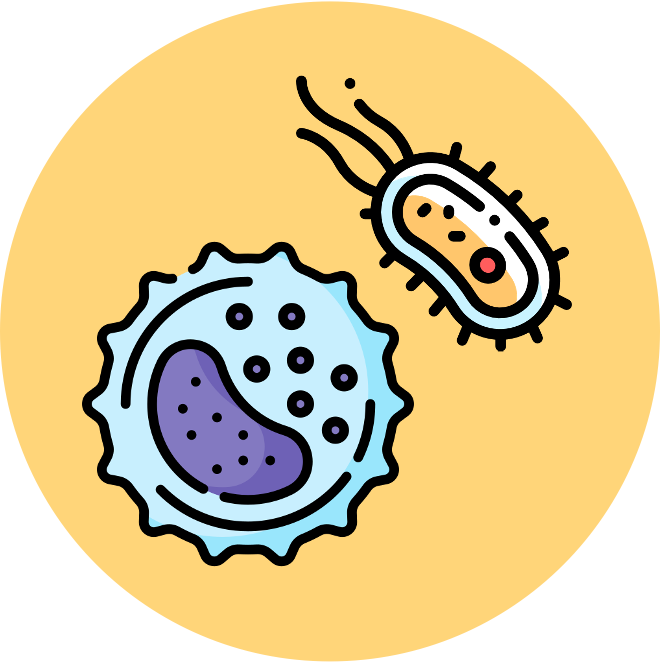

A2.2 – Cell Structure
SL Content Statements
-
A2.2.1
Cells as the basic structural unit of all living organisms
-
NOS: Students should be aware that deductive reason can be used to generate predictions from theories. Based on cell theory, a newly discovered organism can be predicted to consist of one or more cells.
-
A2.2.2
Microscopy skills
-
AOS: Students should have experience of making temporary mounts of cells and tissues, staining, measuring sizes using an eyepiece graticule, focusing with coarse and fine adjustments, calculating actual size and magnification, producing a scale bar and taking photographs.
NOS: Students should appreciate that measurement using instruments is a form of quantitative observation.
-
A2.2.3
Developments in microscopy
-
Include the advantages of electron microscopy, freeze fracture, cryogenic electron microscopy, and the use of fluorescent stains and immunofluorescence in light microscopy.
-
A2.2.4
Structures common to cells in all living organisms
-
Typical cells have DNA as genetic material and a cytoplasm composed mainly of water, which is enclosed by a plasma membrane composed of lipids. Students should understand the reasons for these structures.
-
A2.2.5
Prokaryote cell structure
-
Include these cell components: cell wall, plasma membrane, cytoplasm, naked DNA in a loop and 70S ribosomes. The type of prokaryotic cell structure required is that of Gram-positive eubacteria such as Bacillus and Staphylococcus. Students should appreciate that prokaryote cell structure varies. However, students are not required to know details of the variations such as the lack of cell walls in phytoplasmas and mycoplasmas.
-
A2.2.6
Eukaryote cell structure
-
Students should be familiar with features common to eukaryote cells: a plasma membrane enclosing a compartmentalized cytoplasm with 80S ribosomes; a nucleus with chromosomes made of DNA bound to histones, contained in a double membrane with pores; membrane-bound cytoplasmic organelles including mitochondria, endoplasmic reticulum, Golgi apparatus and a variety of vesicles or vacuoles including lysosomes; and a cytoskeleton of microtubules and microfilaments.
-
A2.2.7
Processes of life in unicellular organisms
-
Include these functions: homeostasis, metabolism, nutrition, movement, excretion, growth, response to stimuli and reproduction.
-
A2.2.8
Differences in eukaryotic cell structure between animals, fungi and plants
-
Include presence and composition of cell walls, differences in size and function of vacuoles, presence of chloroplasts and other plastids, and presence of centrioles, cilia and flagella.
-
A2.2.9
Atypical cell structure in eukaryotes
-
Use numbers of nuclei to illustrate one type of atypical cell structure in aseptate fungal hyphae, skeletal muscle, red blood cells and phloem sieve tube elements.
-
A2.2.10
Cell types and cell structures viewed in light and electron micrographs
-
AOS: Students should be able to identify cells in light and electron micrographs as prokaryote, plant or animal. In electron micrographs, students should be able to identify these structures: nucleoid region, prokaryotic cell wall, nucleus, mitochondrion, chloroplast, sap vacuole, Golgi apparatus, rough and smooth endoplasmic reticulum, chromosomes, ribosomes, cell wall, plasma membrane and microvilli.
-
A2.2.11
Drawing and annotation based on electron micrographs
-
AOS: Students should be able to draw and annotate diagrams of organelles (nucleus, mitochondria, chloroplasts, sap vacuole, Golgi apparatus, rough and smooth endoplasmic reticulum and chromosomes) as well as other cell structures (cell wall, plasma membrane, secretory vesicles and microvilli) shown in electron micrographs. Students are required to include the functions in their annotations.
AHL Content Statements
-
A1.2.12
Origin of eukaryotic cells by endosymbiosis
-
Evidence suggests that all eukaryotes evolved from a common unicellular ancestor that had a nucleus and reproduced sexually. Mitochondria then evolved by endosymbiosis. In some eukaryotes, chloroplasts subsequently also had an endosymbiotic origin. Evidence should include the presence in mitochondria and chloroplasts of 70S ribosomes, naked circular DNA and the ability to replicate.
NOS: Students should recognize that the strength of a theory comes from the observations the theory explains and the predictions it supports. A wide range of observations are accounted for by the theory of endosymbiosis.
-
A1.2.13
Cell differentiation as the process for developing specialized tissues in multicellular organisms
-
Students should be aware that the basis for differentiation is different patterns of gene expression often triggered by changes in the environment.
-
A1.2.14
Evolution of multicellularity
-
Students should be aware that multicellularity has evolved repeatedly. Many fungi and eukaryotic algae and all plants and animals are multicellular. Multicellularity has the advantages of allowing larger body size and cell specialization.



